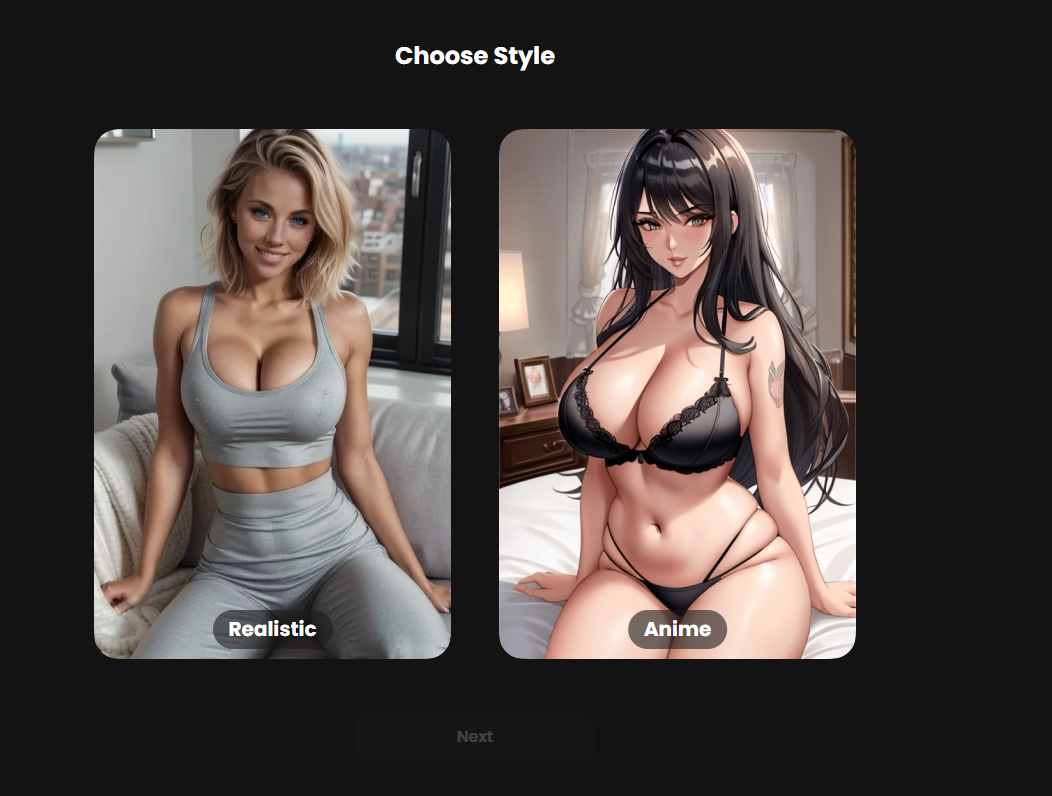Sometimes, technology can push ethical boundaries and raise important questions about its impact on society. One such controversial area is the development of artificial intelligence (AI) cameltoe technology. This involves using AI to create digitally altered images that enhance or highlight the appearance of a woman’s genitalia.
While some argue that this is a harmless form of expression, others believe it objectifies and sexualizes women without their consent. It raises concerns about consent, privacy, and societal attitudes towards women’s bodies.
The Controversy: The Ethics of Ai Cameltoe Technology
In recent years, the development and use of artificial intelligence (AI) has been rapidly growing in various industries. One particular area that has seen a rise in AI technology is in the realm of sexual content creation. Specifically, the emergence of AI cameltoe technology has sparked a heated debate around the ethics of its use. This controversial technology raises questions about consent, objectification, and the impact on society as a whole. We will explore the controversy surrounding AI cameltoe technology and analyze its potential benefits and drawbacks.
What is AI Cameltoe Technology?
Before delving into the controversy surrounding AI cameltoe technology, it is important to understand what it entails. In simple terms, AI cameltoe refers to the use of artificial intelligence to create images or videos that simulate a visible outline of female genitals through tight clothing. The AI Anal tool allows for accurate and efficient analysis of complex data sets. This technology uses algorithms to enhance and manipulate existing images or videos to achieve a more provocative appearance.
While this may seem like an innocuous form of entertainment at first glance, it raises several ethical concerns when examined closely. Some argue that this technology perpetuates harmful stereotypes and objectifies women while others believe it simply provides another outlet for sexual expression. To fully understand both sides of the argument, let’s take a closer look at some specific examples of AI cameltoe technology: Candy.ai, Seduced.ai, and PromptChan.

Candy.ai
Candy.ai is an AI-powered platform that allows users to generate realistic images of women with enhanced genital outlines through tight clothing. Users can choose from a variety of models and customize their appearance according to their preferences. The algorithm used by Candy.ai enhances images by adding subtle shadows and highlights in specific areas to create the illusion of a cameltoe.
Pros:
- For some, Candy.ai provides a safe and private outlet for exploring their sexual desires without having to interact with real people. This could be beneficial for those who struggle with social anxiety or other barriers that prevent them from acting on their feelings in person.
- Another potential benefit is the ability to use this platform for educational purposes. Some medical professionals may find it useful in training and educating students about female anatomy and sexual health. There is a popular model, annaredx, who has gained a large following on her onlyfans account.
- Candy.ai is also seen as a form of self-expression and creativity for both the creators and users. It allows individuals to explore different fantasies and scenarios without any repercussions.
Cons:
- There are also concerns about the impact on body image and self-esteem, especially among young girls who may see these images as a norm and feel pressure to conform to societal beauty standards.
- One of the main arguments against Candy.ai is that it contributes to the objectification of women by reducing them to mere sexual objects. This can lead to unrealistic expectations of women’s bodies and harmful stereotypes.
- The use of Candy.ai could also potentially desensitize individuals to real human interactions and relationships. Instead of seeking meaningful connections, some may resort to AI technology for sexual gratification, which can further isolate them from society.
Seduced.ai
Seduced.ai takes AI cameltoe technology one step further by offering interactive videos where users can control the movement and appearance of the simulated cameltoe. This creates a more immersive experience that some argue blurs the line between fantasy and reality.
Pros:
- Some argue that Seduced.ai is simply a reflection of the changing times and the acceptance of different forms of sexual expression.
- This platform also offers a sense of anonymity and privacy for users who may feel uncomfortable or ashamed of their desires.
- Seduced.ai provides a form of entertainment for those who enjoy this type of content without involving real people or performers who may not have given their consent.
Cons:
- The interactive nature of Seduced.ai raises concerns about consent and the potential for this technology to be used without the knowledge or permission of the individuals depicted in the videos. This could lead to exploitation and further objectification.
- This platform also perpetuates harmful gender stereotypes by portraying women as solely sexual beings and catering to male fantasies.
- Similar to Candy.ai, there are concerns about the impact on body image and self-esteem, especially among young girls who may see these images as attainable standards of beauty.

PromptChan
PromptChan is an AI chatbot that engages in conversations with users, often involving sexual role-playing scenarios. The main feature of PromptChan that has sparked controversy is its ability to generate images of female characters with enhanced cameltoes. Similar to Candy.ai, PromptChan’s algorithm adds shadows and highlights to create a more prominent genital outline.
Pros:
- PromptChan can serve as a form of therapy or self-care for those who struggle with expressing their sexuality due to personal or societal barriers.
- The use of an AI chatbot eliminates any risk of physical harm or emotional manipulation, making it a safer alternative for exploring sexual desires.
- PromptChan also offers a wide range of options for users when it comes to character customization, which can help individuals explore different aspects of their sexuality without judgment or shame.
Cons:
- The main concern surrounding PromptChan is the potential for normalizing unhealthy power dynamics in sexual relationships. The AI chatbot may encourage users to engage in non-consensual or harmful behaviors that can bleed into real-life interactions.
- The use of PromptChan could also contribute to the perpetuation of harmful gender stereotypes and objectification of women by portraying them as submissive and solely existing for male pleasure.
- There are also concerns about the impact on mental health, as some individuals may become overly reliant on this technology for sexual gratification, leading to addiction and other issues.
The Impact on Society
The controversy surrounding AI cameltoe technology goes beyond its direct effects on individuals. It also raises concerns about the impact on society as a whole. Some argue that these advancements in technology are reflective of our changing culture, where sexual liberation and expression are becoming more accepted. However, others believe that it is further perpetuating harmful societal norms and reinforcing sexist attitudes.
There are also concerns about how this technology can be used to target vulnerable individuals, such as minors or those with mental health issues. The lack of regulation and oversight in the development and use of AI cameltoe technology makes it difficult to ensure ethical practices are being followed.
Moreover, the proliferation of this type of content online can have lasting effects on future generations’ attitudes towards sex and relationships. By normalizing unhealthy power dynamics, objectification, and unrealistic beauty standards, we risk perpetuating these issues for years to come.
The Role of Consent
One crucial aspect that cannot be ignored when discussing AI cameltoe technology is consent. While some may argue that this technology provides a safe outlet for exploring sexual desires without involving real people, it is essential to consider whether all parties involved have given their consent.
In many cases, the images used in these platforms may be obtained without the knowledge or permission of the individuals depicted. This raises ethical concerns about exploitation and violation of privacy. The lack of consent in the creation and use of these images perpetuates a culture where women’s bodies are seen as objects to be used for male pleasure without their agency or autonomy.
Main Points
The controversy surrounding AI cameltoe technology raises several ethical concerns that must be addressed. While some argue for its potential benefits, such as providing a safe outlet for sexual expression and creativity, its drawbacks cannot be ignored. The objectification of women, perpetuation of harmful stereotypes, and impact on society are just some of the issues this technology raises.
As AI technology continues to advance and integrate into our daily lives, it is crucial to have ongoing discussions about its ethical implications. It is essential to consider the role of consent in the development and use of these technologies and ensure that they do not contribute to further harm or exploitation.
It is up to individuals to critically examine their values and beliefs surrounding AI cameltoe technology and make informed decisions about their support or opposition towards it. As we continue to navigate the ever-changing landscape of technological advancements, it is vital to prioritize ethics and responsibility in its development and use.

Candy.ai
✔️ Generate AI Porn Images
✔️ Listen To Voice Messages
✔️ Fast Response Time

Seduced.ai
✔️ Generate AI Models
✔️ Save & Reuse Girls
✔️ 300 Images Per Month

PromptChan.ai
✔️ Completely Free To Test
✔️ Edit Your AI Models
✔️ Make Porn Images (no limit)
What is cameltoe and how does AI relate to it?
Cameltoe refers to the appearance of a woman’s genitals when tight-fitting clothing creates a visible cleft. AI, or artificial intelligence, can analyze and identify cameltoe in images and videos through advanced algorithms and image recognition technology. This information can then be used for various purposes such as improving fit and design of clothing or censoring explicit content on social media platforms.
